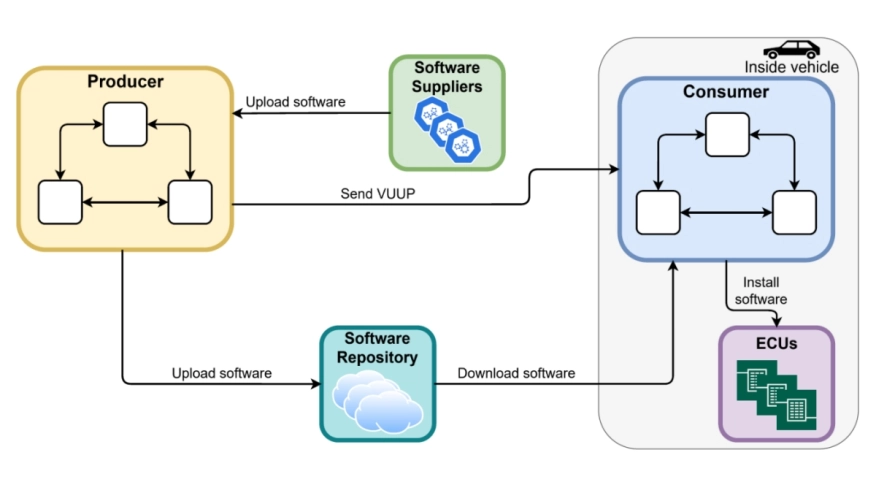Towards a Formal Verification of Secure Vehicle Software Updates
By Martin Slind Hagen a, Emil Lundqvist a, Alex Phu a, Yenan Wang a, Kim Strandberg a,b, Elad Michael Schiller a
a Chalmers University of Technology, Computer Science and Engineering, Gothenburg, 41296, Sweden
b Volvo Car Corporation, Department of Research and Development, Gothenburg, 40531, Sweden

Abstract
 With the rise of software-defined vehicles (SDVs), where software governs most vehicle functions alongside enhanced connectivity, the need for secure software updates has become increasingly critical. Software vulnerabilities can severely impact safety, the economy, and society. In response to this challenge, Strandberg et al. [escar Europe, 2021] introduced the Unified Software Update Framework (UniSUF), designed to provide a secure update framework that integrates seamlessly with existing vehicular infrastructures.
With the rise of software-defined vehicles (SDVs), where software governs most vehicle functions alongside enhanced connectivity, the need for secure software updates has become increasingly critical. Software vulnerabilities can severely impact safety, the economy, and society. In response to this challenge, Strandberg et al. [escar Europe, 2021] introduced the Unified Software Update Framework (UniSUF), designed to provide a secure update framework that integrates seamlessly with existing vehicular infrastructures.
Although UniSUF has previously been evaluated regarding cybersecurity, these assessments have not employed formal verification methods. To bridge this gap, we perform a formal security analysis of UniSUF. We model UniSUF's architecture and assumptions to reflect real-world automotive systems and develop a ProVerif-based framework that formally verifies UniSUF's compliance with essential security requirements - confidentiality, integrity, authenticity, freshness, order, and liveness - demonstrating their satisfiability through symbolic execution. Our results demonstrate that UniSUF adheres to the specified security guarantees, ensuring the correctness and reliability of its security framework.
Keywords: Provable Security, Vehicular Systems, Secure Software Updates
To read the full article, click here
Related Semiconductor IP
- HBM4 PHY IP
- Ultra-Low-Power LPDDR3/LPDDR2/DDR3L Combo Subsystem
- HBM4 Controller IP
- IPSEC AES-256-GCM (Standalone IPsec)
- Parameterizable compact BCH codec
Related Articles
- Out of the Verification Crisis: Improving RTL Quality
- IC design: A short primer on the formal methods-based verification
- The pitfalls of mixing formal and simulation: Where trouble starts
- A new era of chip-level DRC debug: Fast, scalable and AI-driven
Latest Articles
- A 14ns-Latency 9Gb/s 0.44mm² 62pJ/b Short-Blocklength LDPC Decoder ASIC in 22FDX
- Pipeline Stage Resolved Timing Characterization of FPGA and ASIC Implementations of a RISC V Processor
- Lyra: A Hardware-Accelerated RISC-V Verification Framework with Generative Model-Based Processor Fuzzing
- Leveraging FPGAs for Homomorphic Matrix-Vector Multiplication in Oblivious Message Retrieval
- Extending and Accelerating Inner Product Masking with Fault Detection via Instruction Set Extension